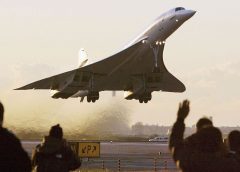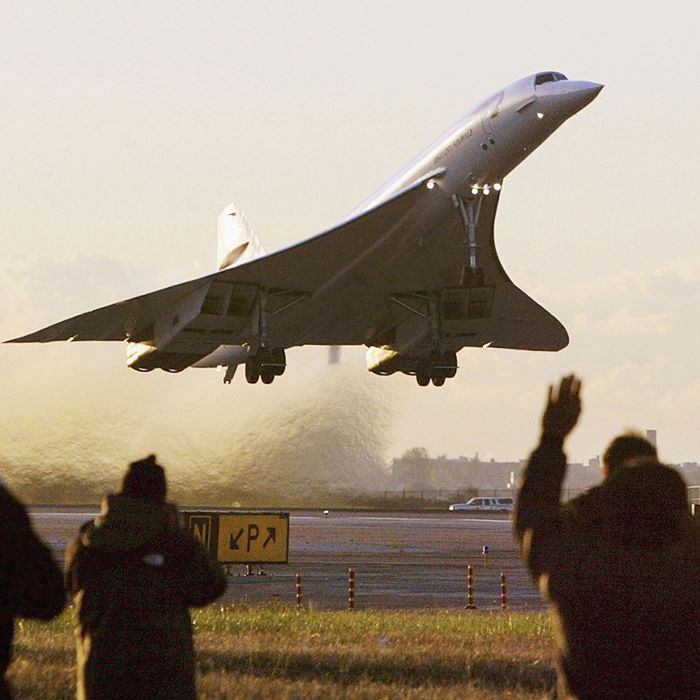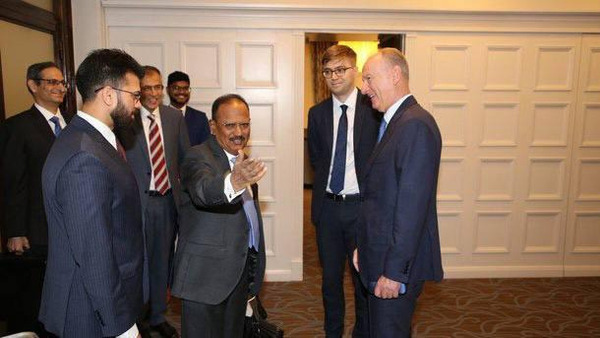
Boom and the Disappointment of Supersonic Travel’s Return
[ad_1]

Onlookers wave as the last Concorde passenger flight ever takes off from John F. Kennedy International Airport en route to London on October 24, 2003.
Photo: Mario Tama/Getty Images
Air travel is about to get a hell of a lot faster — at least that’s what the headlines say. “American Airlines to buy supersonic jets amid clamor for ultra-fast travel,” declared the Washington Post on Wednesday morning. “World’s fastest airliner ‘Overture’ to usher in new era of supersonic travel,” the New York Post proclaimed. They were pegged to American Airlines’ announcement that it had placed orders for 20 supersonic Overture jets from a start-up called Boom. The planes will carry up to 80 passengers at Mach 1.7. Better yet, they’ll burn a special fuel that will make them carbon neutral.
It’s all very exciting, if it happens. But there are many reasons to believe it won’t — not least that, for years, similar claims have continuously come up empty. “It’s just PR,” says aviation analyst Brian Foley. Supersonic air transportation is, he says, “still a long way off,” adding, “It’s fun to dream.”
To hear Boom tell it, the project is moving along at a blistering pace, and later this year the company says it will break ground on a factory in North Carolina. “We’ll begin production in 2024, with the first Overtures coming off the line in 2025,” Boom president Kathy Savitt says. Flight testing and certification will follow in short order. “We estimate that the very first passengers will be able to fly an Overture by the end of 2029,” she says.
Boom has made similarly ambitious claims before. Back in 2016, the company said it would be making three-hour transatlantic flights by 2023. In the meantime, it hasn’t even flown a scale model. “It’s always a decade in the future,” says Foley.
The reality is that developing any new airframe is a vastly expensive and lengthy process, so much so that even the aviation heavyweights approach it with trepidation. The A350 took Airbus a decade and $15 billion to take from the drawing board to the runway. Add in the technical challenges of supersonic flight and you’re climbing an even higher mountain. Industry analyst Richard Aboulafia has speculated that a project like Boom could cost $20 billion to develop.
Aircraft designer and longtime industry observer Peter Garrison says those hurdles put him in the skeptics camp, “just from the knowledge of how hard it is to bring a project like this to fruition. As with all such ambitious projects, dates of critical milestones keep getting pushed back and the costs keep climbing.”
A big part of the challenge is developing an engine. Flying supersonic is technically challenging and requires an especially tough and durable power plant. Because no other supersonic commercial planes exist, there is no off-the-shelf engine Boom could simply hang under the wing. “It will be a modified engine specifically for us,” Savitt acknowledges.
Rolls-Royce, which has been in talks with Boom, told the aerospace publication the Air Current earlier this year that it wouldn’t pocket the development expense. “If Boeing or Airbus comes out with a new product, the engine and avionics providers will pay a lion’s share of the development in anticipation of income further down the line,” Foley says. “But this is more of a niche program.”
Even if Boom could build and certify the Overture, its customers would still need to be able to operate the jet profitably. Given the high fuel and maintenance costs of such a jet, seats would necessarily be a high-ticket item. A Concorde seat sold for about $20,000 in today’s dollars. Even if Savitt is correct in estimating that the Overture will be able to operate profitably at 75 percent of that fare or less, that’s still a lot of money for a minimum fare given that the plane will be allowed to fly supersonic only over oceans, since the sonic boom would annoy anyone on the ground.
Finally, there’s the claim that the Overture will be carbon neutral. Boom says the plane will run on “sustainable aviation fuel,” or SAF, a catchall term that includes biofuel and synthetic hydrocarbons captured from the atmosphere. But the simple fact is that once a manufacturer sells a plane to an airline, it has no say over what kind of fuel it burns. SAF, says Foley, “is not plentiful, it’s not available everywhere, and it’s extremely expensive. Given that the airlines are all cost conscious, that’ll be a real decision tree for them.”
The daunting challenges of building a supersonic transport have already doomed another start-up that was trying to do the same thing. Last year, Aerion Supersonic, a venture backed by Boeing, closed its doors after running out of money. Another, Spike Aerospace, has put its efforts on hold.
For his part, Garrison says his disappointment in the past failures of these projects is tempered by the knowledge that, even if they did ultimately work out, they would in no way have benefited people like him. “It’s just to make some rich people happier,” he says.
[ad_2]
Source link


